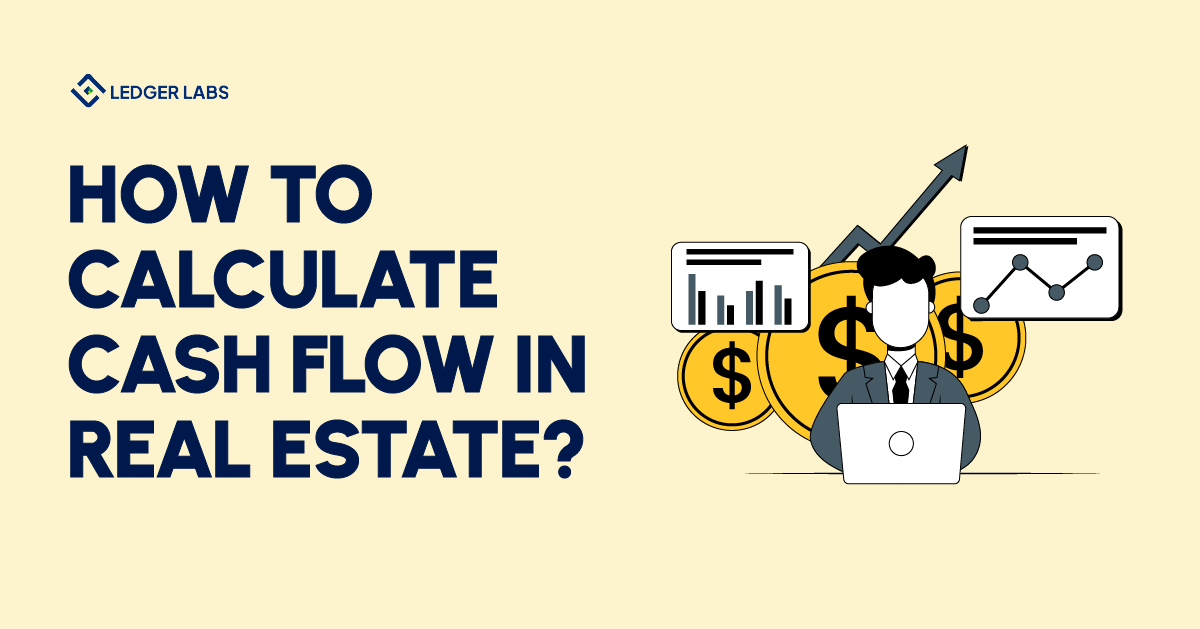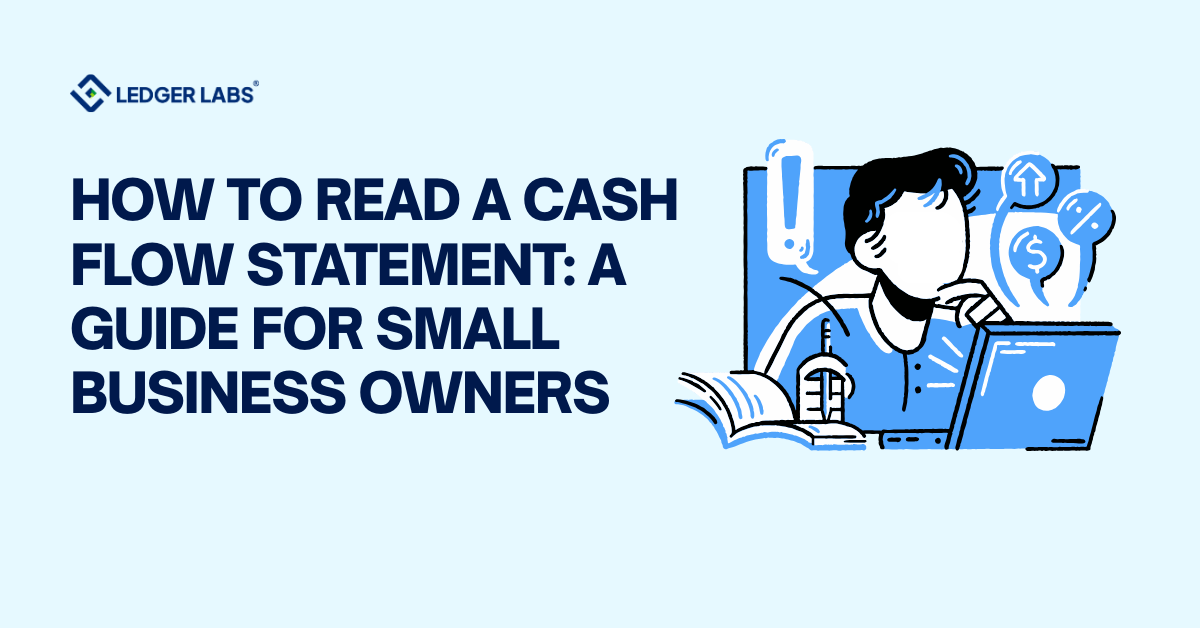1. Automating rent collection and payments can reduce billing errors and administrative workload by over 30%, improving cash flow management and tenant satisfaction.
2. Real estate managers using detailed expense tracking and budgeting can reduce operational costs by 15–20%, boosting overall profitability.
3. Conducting monthly bank reconciliations can identify financial discrepancies early, reducing errors and fraud risks by up to 25%.
4. Generating comprehensive financial reports (cash flow statements, income statements, and balance sheets) ensures data accuracy and enables better investment decisions, supporting 10–15% higher returns on properties.
5. Segregating accounts for individual properties aids in precise financial tracking and performance analysis, which can improve asset management efficiency by 20–30%.
Cash flow is the sum of money that comes in and goes out of a business.
In this case, however, it talks about the rental income the property is generating, along with other expenses directly related to maintaining it nonetheless.
Moreover, cash flow is usually bifurcated into two streams, positive cash flow and negative cash flow.
But, to learn more about the type of cash flow you are generating from your rental properties, keep reading this blog post.
What is Cash Flow?
In simple words, cash flow is the net cash as well as cash equivalents that come in and go out of a business.
When a business receives money, it is referred to as “cash inflow”. On the other hand, if the business spends the money, it is known as “cash outflow”.
As you can guess already, the primary goal of anyone – let alone a business – is to have more money come in than go out. If that is actually the case, it is called positive cash flow, which simply means that the business is receiving more cash than it is spending it.
Moreover, businesses are compelled to create value for their shareholders, and one way they can do this is by continuously producing positive cash flows. In other words, this means that the business is not just making enough to cover their immediate and relevant costs, but they are earning way above it.
In this topic, another highly related and vital term is Free Cash Flow (FCF). This is basically the sum of money a business makes from its normal, day-to-day activities after they have accounted for any major expenses or investments (which are also often known as capital expenditures or CapEx).
Nevertheless, this free cash flow is a substantial indicator since it exhibits the amount of cash and its equivalents a company has to invest in fresh projects, return to shareholders, or mitigate any outstanding debt. But, in order to understand it in more depth, you will need to know its formula.
What is Cash Flow Formula?
- Free Cash Flow = Net income + Depreciation/Amortization – Change in Working Capital – Capital Expenditure
- Operating Cash Flow = Operating Income + Depreciation – Taxes + Change in Working Capital
- Cash Flow Forecast = Beginning Cash + Projected Inflows – Projected Outflows = Ending Cash
What is Cash Flow in Real Estate?
In the context of real estate, it includes the rental income a property produces, along with the expenses required to maintain that property.
Real estate investments can either come in the form of positive cash flow or negative cash flow.
A positive cash flow indicates that the income of the property is greater than the expenses it bears. On the flip side, a negative cash flow shows that the property has more expenses than the income it generates.
When we talk about positive cash flow, it is more suitable for real estate investors as it showcases that they are making a good profit out of it. This, in turn, boosts their ROI (return on investment). In addition, this is also actually good news. Simply put, if you book more profit, you simultaneously gain more money. That means you will have extra cash in hand available for repairs, general upkeep, and total maintenance, at large.
If we talk about negative cash flow, it can often happen because the rental property has been unrented for quite a while, or maybe the cost that goes into the property is more than the income it brings to the table. Well, negative cash also means that the investor is actually losing money, making property management more difficult.
Have questions regarding Cash Flow in Real Estate?
Consult our expert accountants!
How to Calculate Cash Flow in Real Estate?
If you want to understand cash flow for real estate investments, you need to start with a clear grasp of the financial input and output of the property.
In the first step, you need to figure out the gross income the property can generate. This gross income generally consists of the sum you gained from the property prior to any deductions. One of its examples is mortgage payments.
In the case of residential rental properties, the rent received from tenants is basically the primary source of income. At and when necessary, your lease agreement may also occasionally cover additional income via late fees, maintenance fees, and pet fees, among others.
Following this, consider all the expenses that are mainly associated with owning this property. Some of them can be:
- Property taxes
- Utility costs
- Legal and professional fees, such as eviction costs
- Property management fees (in case you have employed someone to manage the property)
- Maintenance and repair costs
- Insurance coverage
- Advertising costs
- Necessary business licenses
Now comes the part where you have to determine the vacancy rate and Net Operating Income (NOI).
The vacancy rate, as the name suggests, refers to the time the property is unrented or unoccupied and not generating any income. Now, let’s say you want to calculate the vacancy rate. In this case, determine the total days until which the property has been kept vacant in a year. Then, divide it by the number of days the property could actually be rented. Lastly, just multiply it by 100.
Let’s have a better look at this breakdown through an example.
Let’s say a property was unoccupied for a period of 16 weeks in a year. But, you know that it could have been rented for 52 consecutive weeks. Therefore, it has a vacancy rate of almost 30.76%.
When you have the gross income and total expenses fully clear, you can then easily determine the NOI of the real estate cash flow. In other words, NOI can be evaluated by deducting the total expenses from the gross income. This basically showcases the cash flow produced before making any debt payments. Now comes the interesting part.
Determining Net Cash Flow After Debt
This is actually the last step. Herein, you determine the net cash flow after accounting for all the debts. As the name suggests, this is the section where you take any debt payments related to the property out of the NOI. In the end, the figure you see on paper is the actual cash flow you will obtain after all the expenses and debts are fulfilled for the property.
Why are Cash Flow Real Estate is Important to Calculate?
Undeniably, the primary reason why it is important to calculate the cash flow in real estate is because you can assess how profitable the rental property is. However, just having a full-drawn potential rental income is not sufficient. You also have to know the property’s operating expenses, along with other debt payments, to have a clear visibility of the actual cash flow.
Nonetheless, when you determine the cash flow, you can understand if a property will meet, surpass, or fall short of the financial goals you have set. Plus, you should also know that there is no “good” rate of return for rental properties. Well, that’s because it differs from place to place and from personal perspectives.
But, here’s the thing, the thumb rule guides toward the 1% rule. This rule says that a property can mostly be considered profitable if the monthly rent is a minimum of 1% of the purchase price.
Let’s say you are about to rent a property that costed you $450,000. Here, the property must bring in at least $4,500 in rent every month. But, this also majorly depends on the location of the property.
A charge like $4,500 is often feasible in cities like New York and California, but renting it in a smaller town at the same cost is quite unreasonable. So, always do the math and make sure you know the place you are investing. At the end of the day, everything comes with its own pros and cons.
Real Estate Cash Flow Analysis Methods
When you want to calculate cash flow real estate, there are certain analysis methods you need to keep in mind. Here’s a rundown:
- Direct Cash Flow Method – In this method, we generally have to sum up all the cash obtained from operating activities. Further, we have to deduct all the cash spent on operating activities. In this way, the direct cash flow method helps us calculate the net cash flow.
- Indirect Cash Flow Method – On the contrary, this method starts with net income and adapts it by adding or deducting non-cash revenues and expenses in order to evaluate the net cash flow.
- Discounted Cash Flow (DCF) Method – DCF is widely known as a valuation method that is used to calculate the value of an investment on the basis of its future cash flows. This is usually used to estimate real estate investments.
The formula of DCF is as follows:
DCF = CF1 / (1 + r)1 + CF2 / (1 + r)2 + CF3 / (1 + r)3 + . . . CFn (1 + r)nIn this formula of discounted cash flow real estate,
→ CF = Cash flow
→ R = Discount rate
Now, to calculate Discounted Cash Flow for Real Estate, here’s what we should consider:
- Initial cost: This can either be the purchase price or the down payment made on the property.
- Discount rate: This is the expected rate of return.
- Holding period: The holding period generally ranges between 5 to 15 years. It also depends on the investor and the particular property.
- Extra yearly expenses: The yearly costs basically consist of well-anticipated property taxes, maintenance, and repairs, along with several other costs except financing.
- Projected cash flows: This is simply the year-by-year calculations of rental income generated from the property.
- Sale profit: The expected profit when the property is sold at the end of the holding period.
However, the calculations related to DCF can often be tricky. It can include other items to consider, such as rent increments, property value growth, and maintenance costs, at large. More important, this is based on similar area properties.
Try our Real Estate Cash Flow Calculator!
Don’t spend the extra time assessing and analyzing real estate properties. Get our real estate cash flow calculator now and explore precise, data-oriented projections of a property’s potential profitability. Get started now.
Tips for Improving Cash Flow Real Estate
For absolutely any real estate investment, maintaining a positive cash flow is highly imperative. So, here are some tips to help you improve cash flow:
1. Strategies to increase rental income
- Set up recurring rent increases for current tenants.
- Conduct market research and adapt to market rates.
- Reduce vacancy periods via good marketing measures and tenant screening.
- Don’t miss out on opportunities to earn additional income (for instance, storage rentals, pet fees, etc).
2. Ways to reduce operating expenses
- Conduct routine upkeep to prevent expensive repairs.
- Make sure you negotiate the rates with service providers (for example, utilities, insurance, and maintenance).
- You can use energy-efficient upgrades in order to reduce utility costs.
- Often, you can manage the property yourself to eliminate the overhead of management fees.
- Make sure to use technology to automate processes and mitigate administrative costs.
3. Importance of regular cash flow analysis for real estate properties
- Perform time-to-time cash flow analysis, as it offers insights into the financial performance of the property.
- Regular analysis can help you pinpoint areas where the income can be increased or the expenses can be cut down.
- Cash flow projections can also allow you to make wise decisions regarding reinvestments or divestment.
Final Thoughts and Key Takeaways
If you are a real estate investor, you need to have a clear understanding of cash flow. It’s the bottom line that gives you a heads-up on whether or not your investment property is bringing profits to the table.
As many people feel, it can seem unduly complicated to calculate your cash flow. But, here’s the truth – it is barely as difficult a job as you think it is. If properly accounted for, you will have a detailed overview of what your property is capable of generating. Let’s say you do have money left over every month after accounting for all the bills, then congratulations – you have a positive cash flow.
But, if your expenses to the property are somehow more than the money it brings in, then you have a serious, unresolved problem that can gradually take a bigger shape with time. It’s like pulling money out of your own wallet to cover the pitfall.
Considering everything, make sure you are always keeping a close eye on the cash flow projections and the real cash value you are receiving from the property. The key here is being as vigilant as possible to avoid any hidden surprises. So, master the numbers to help keep your money flowing in the right direction.
Have more questions? We at Ledger Labs house some of the most experienced bookkeeping and accounting experts who can answer your questions in no time. Get the right help from a team with more than 12 years of experience. Reach out today!
FAQs
Ques. What is the operating cash flow in real estate?
Ans. Net operating income, in simple words, is a measure that helps us determine the profitability of real estate. It is simply the amount of cash flow generated after accounting for all the costs. If you did not know, a company’s net operating income is typically the same as its operating income.
Ques. What do lenders look for in cash flow?
Ans. Your company’s cash flow gives prospective lenders a clear, transparent idea of how well-equipped it is to repay loans. Said another way, it just goes to show that your company makes enough funds to cover the charges on any current debt in addition to the cost of a fresh loan.












